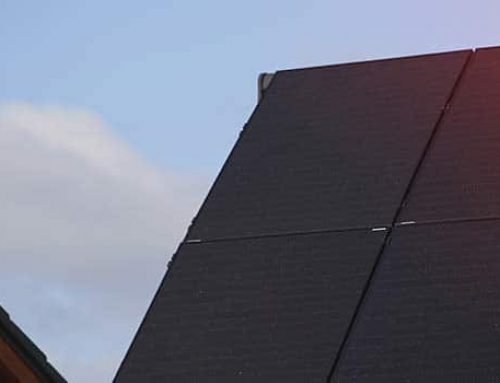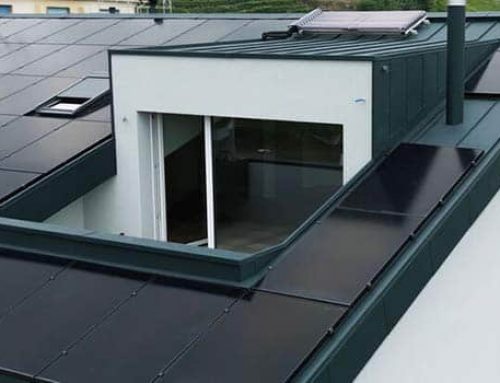Solar energy has been gaining momentum as a clean and renewable source of power, offering a sustainable solution to our growing energy needs.
If you’re like the thousands of homeowners thinking about making the switch to solar, you probably have questions about the efficiency of solar power across all 365 days of the year.
Adelaide is known for its sunny days, but with chilly winters and shorter winter days, is a solar system really the right fit for your home?
Hint: You might be surprised.
We set out to answer that question for you. Understanding the differences in solar panel output between winter and summer is crucial for maximising the benefits of solar energy throughout the year.
Let’s dive in and break down potential solar panel performance during the typical Adelaide summers and winters.
Looking to learn more about solar power? Explore our most popular resources:
The Impact of Seasonal Variations
Adelaide enjoys hot, dry summers and mild, wet winters. These seasonal variations have a direct impact on the performance of your home solar panels. Let’s delve into the factors that influence solar panel output during winter and summer.
| Factor | Impact During Summer | Impact During Winter |
|---|---|---|
| Sunlight Intensity | Higher with the sun positioned higher in the sky, leading to greater energy production. | Lower due to the sun being lower in the sky, resulting in decreased energy production. |
| Temperature | High temperatures can reduce panel efficiency despite increased sunlight. | Cooler temperatures enhance panel efficiency, potentially offsetting lower sunlight. |
| Solar Panel Angle | Optimal angle of incidence with the sun nearly overhead, maximizing energy production. | Less optimal angle due to the lower position of the sun, reducing efficiency. |
| Cloud Cover | Fewer cloudy days, providing more consistent and reliable energy generation. | Increased cloud cover and rainy weather, reducing energy generation efficiency. |
Sunlight Intensity
The most noticeable difference between winter and summer in Adelaide is the intensity of sunlight.
Summer days are longer, with the sun positioned higher in the sky. This means that solar panels receive more direct sunlight, which results in higher energy production. In contrast, during winter, the sun is lower in the sky, and the days are shorter. As a result, solar panels receive less direct sunlight, leading to lower energy generation.
Temperature
While solar panels thrive in sunlight, they are sensitive to temperature changes. Interestingly, solar panels are more efficient in cooler temperatures. High temperatures, common in Adelaide’s summer, can actually cause a slight decrease in panel efficiency. This means that while there is more sunlight during summer, the excessive heat can offset some of the gains in energy production.
Solar Panel Angle
The angle at which sunlight strikes the solar panels, known as the angle of incidence, also plays a role in their efficiency.
In Adelaide, during summer, the sun is nearly overhead, ensuring that sunlight strikes the panels at a more direct angle. This optimises energy production. In winter, however, the lower angle of the sun leads to less direct sunlight hitting the panels, reducing their efficiency.
Cloud Cover
Cloud cover and weather patterns are unpredictable variables that can impact solar panel output. Adelaide experiences fewer cloudy days in summer, which means more consistent and reliable sunlight for energy generation. Winter, on the other hand, sees more cloud cover and potentially rainy weather, further diminishing solar panel efficiency.
How to Maximise Solar Panel Output
While there are differences in solar panel output between winter and summer in Adelaide, there are strategies to maximise energy production throughout the year.
Here are a few of the most effective strategies…
- Panel Placement: Installing solar panels at the optimal angle based on the latitude of Adelaide (approximately 35 degrees) can help ensure better year-round performance. This angle takes into account the changing sun’s position during different seasons.
- Regular Maintenance: Keeping your solar panels clean and free from debris is essential. Dust, dirt, and even bird droppings can reduce the amount of sunlight reaching the panels, thereby decreasing energy production.
- Energy Storage: Investing in energy storage solutions like solar batteries allows you to store excess energy generated during sunny days for use during cloudy periods or at night. This significantly enhances the self-sufficiency of your solar power system.
- Monitoring and Upkeep: Regularly monitor your solar panel system’s performance and address any issues promptly. This can help identify and resolve any efficiency-reducing problems.
- Energy-Efficient Practices: To offset potential dips in energy production during the winter, consider adopting energy-efficient practices within your home. This could include using energy-intensive appliances during peak sunlight hours or investing in energy-efficient appliances.
How to Harness Solar Power in Adelaide (Year-Round)
While seasonal variations can impact solar energy production, the truth is that modern solar panels are designed to capture solar energy even in the most overcast and dreary days. Or, if the weather presents too much of a challenge, you can capture and store excess energy through batteries that provide peace of mind even when clouds slip in front of the sun.
To bridge the gap between winter and summer solar energy production, innovative solutions are emerging that cater to the unique needs of Adelaide’s climate. These solutions not only address the challenge of seasonality but also contribute to a more resilient and sustainable energy ecosystem.
- Energy Storage Systems: Energy storage technologies, particularly batteries, have gained prominence as a way to store excess energy generated during the sun-drenched days of summer. This stored energy can then be utilised during the shorter, cloudier days of winter. By effectively “banking” sunlight, energy storage systems provide a consistent power supply, reducing dependence on the grid and enhancing energy self-sufficiency.
- Smart Grid Integration: Smart grid technologies enable seamless integration between solar panels, energy storage systems, and the grid itself. During times of surplus energy production, such as sunny summer days, excess power can be fed back into the grid. This not only benefits individual solar panel owners but also contributes to the overall stability of the energy system.
- Seasonally Adjustable Mounting Systems: Some innovative solar panel mounting systems allow for adjustments in solar panel angle according to the season. During summer, panels can be tilted to capture the maximum amount of sunlight, while in winter, they can be adjusted to optimise energy capture even with the lower sun angle.
- Energy-Efficient Building Design: As the push for sustainable construction practices gains momentum, architects are incorporating passive solar design principles into buildings. These designs leverage the angle of the sun to maximise natural heating during winter and shading during summer, reducing the overall energy demand.
Empowering Adelaide’s Energy Future
By embracing innovative technologies and the strategies in this guide, you can embrace the challenges posed by seasonal variations and transform them into opportunities for growth and resilience.
While summer offers the bounty of abundant sunlight, winter’s lower energy production challenges us to innovate and adapt. By combining solar energy’s potential with storage technologies, smart grid integration, and sustainable design practices, you can enjoy clean, renewable energy 365 days a year.
Interested in learning more? Get in touch on (08) 7120 6377 or request your obligation-free quote online now.






![How to Monitor Solar Panel Output for Your Adelaide Home or Business [Simple Guide]](https://energybuster.com.au/wp-content/uploads/2023/09/How-to-monitor-solar-panel-output-in-Adelaide-01-500x383.jpg)
